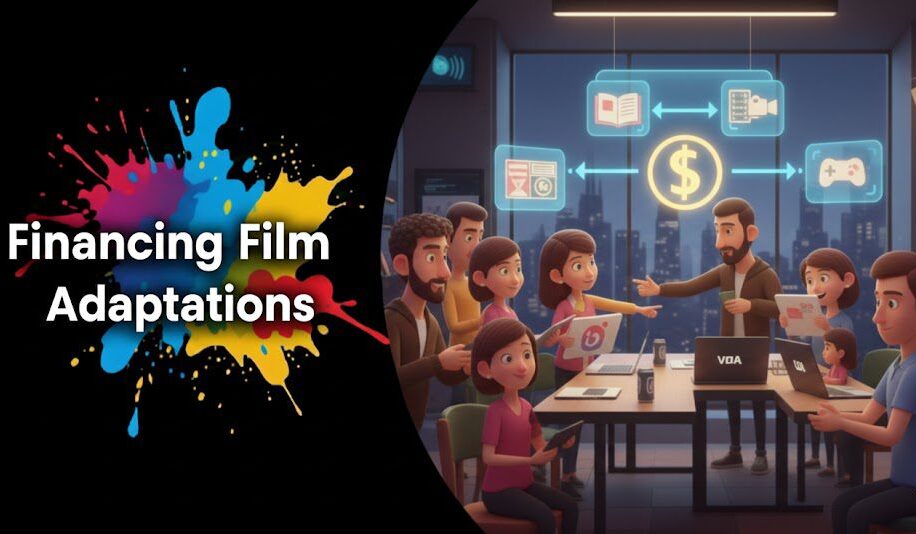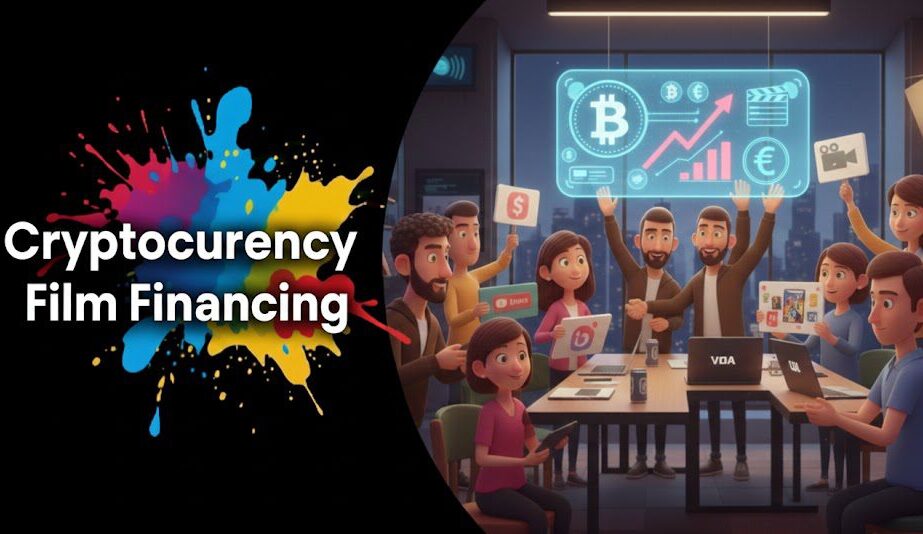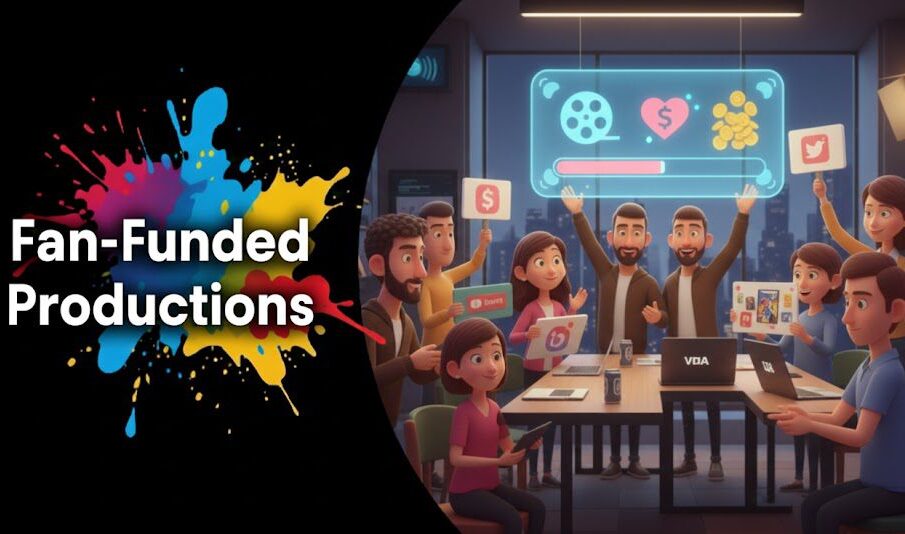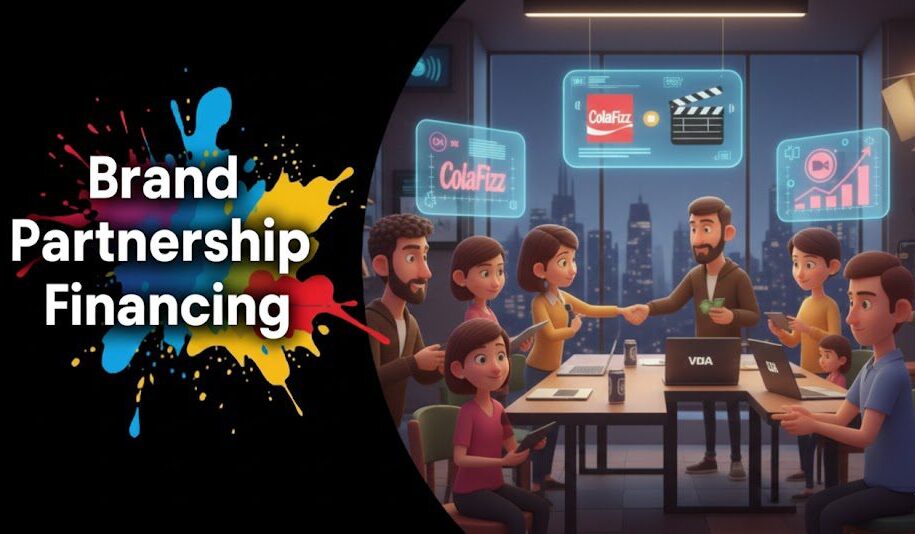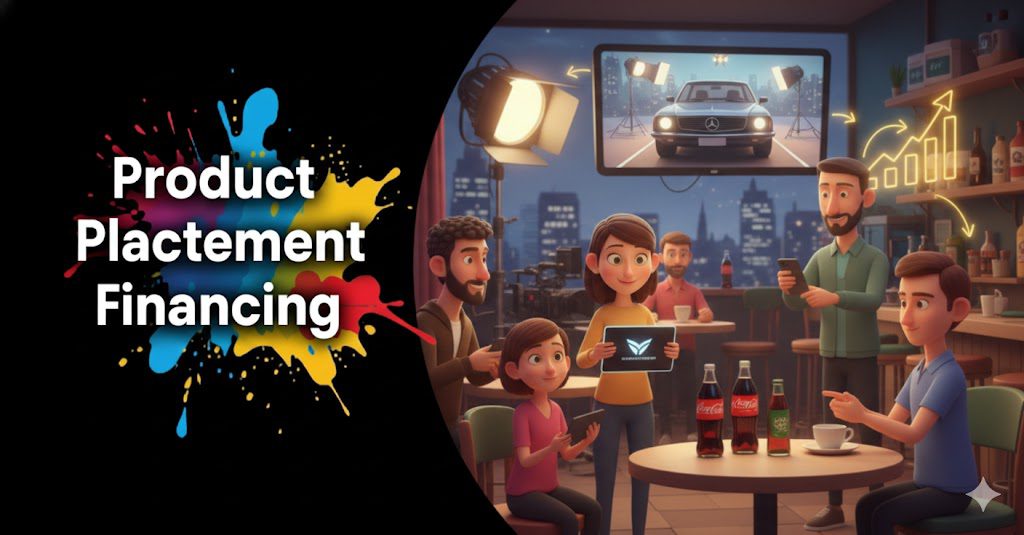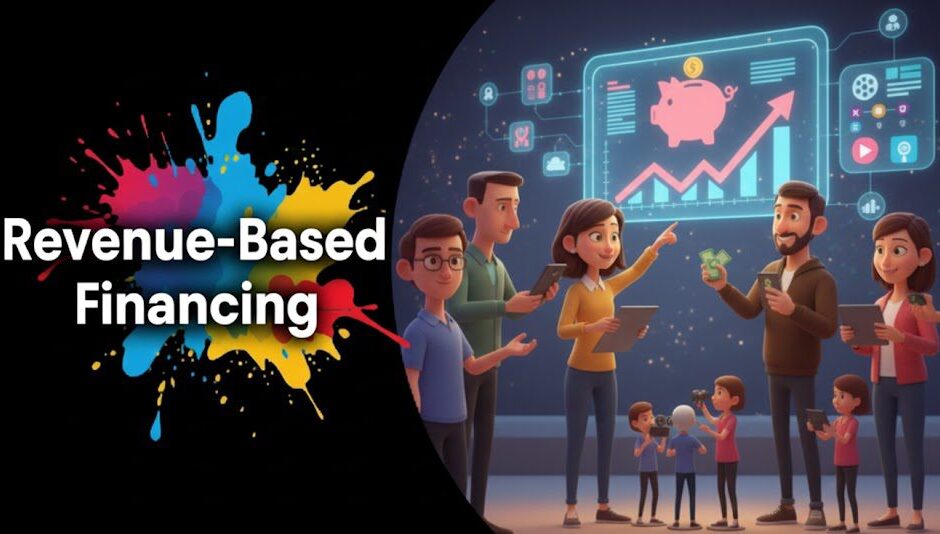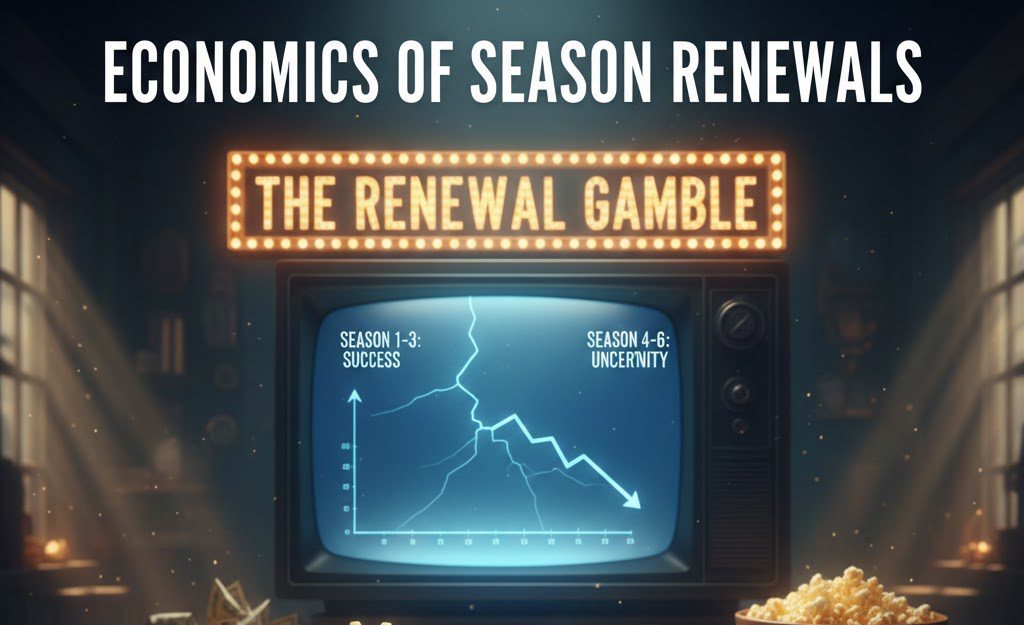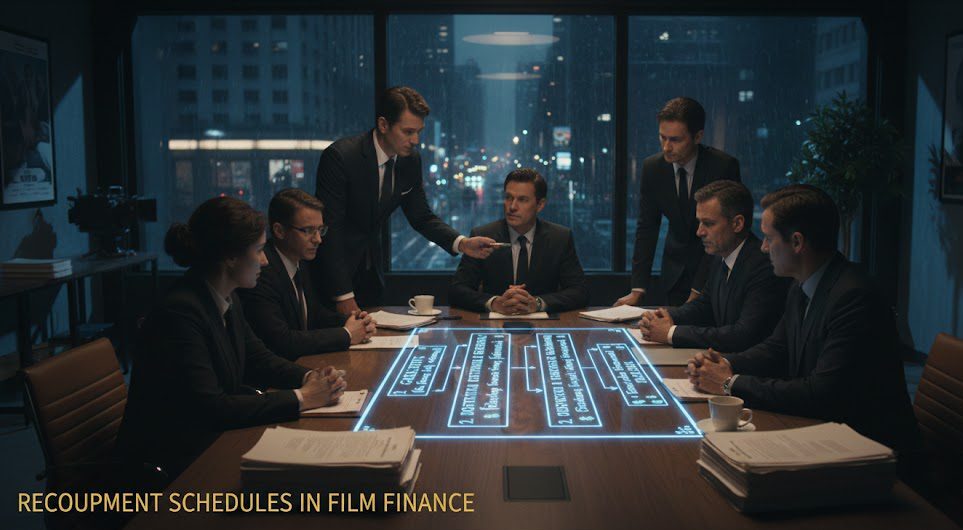Introduction
While the overarching principles of content licensing apply across various media, film and TV content licensing presents its own distinct set of challenges and opportunities. These two dominant forms of entertainment have unique lifecycles, diverse monetization windows, and specific considerations for rights holders, distributors, and acquiring platforms.
From blockbuster movie licensing for theatrical runs to multi-season series licensing for global streaming services, and the nuances of scripted vs unscripted licensing, professionals in this space navigate a complex terrain. This article takes a deep dive into the specific intricacies of film and TV content licensing, exploring what makes them unique and how to strategically approach their distribution and acquisition in today’s dynamic market, including aspects like documentary film licensing and even short film licensing.
Table of content
- Introduction
- Key-Takeaways
- Defining Film & TV Content Licensing: What Sets Them Apart?
- The Journey of Movie Licensing: From Theaters to Streaming
- Navigating TV Series Licensing: Seasons, Stacking, and Syndication
- Scripted vs. Unscripted Licensing: Different Strokes for Different Folks
- The Niche Worlds of Documentary and Short Film Licensing
- Unique Challenges in Film & TV Licensing
- Opportunities in the Evolving Film & TV Licensing Landscape
- Conclusion
- FAQs
Key Takeaways
| Content Type | Unique Licensing Aspect | Key Opportunity |
|---|---|---|
| Film Content Licensing | Traditional theatrical windowing, high-value ancillary rights (home video, pay TV). | Significant revenue potential from sequential window exploitation and international sales. |
| TV Content Licensing | Multi-episode/season deals, importance of stacking rights, format rights potential. | Long-term audience engagement, global SVOD demand, brand building. |
| Scripted vs. Unscripted | Scripted often has higher budgets/IP value; unscripted formats are highly licensable for local adaptation. | Global appeal for strong scripted narratives; scalability of unscripted formats. |
| Documentaries | Can be topical or evergreen; diverse buyers (broadcasters, streamers, educational). | Reaching niche audiences, long shelf-life for quality docs. |
| Short Films | Often licensed for anthologies, festivals, or specific online platforms. | Showcasing emerging talent, niche platform appeal. |
| Market Dynamics | Streaming platforms heavily influence windowing and exclusivity for both film and TV. Vitrina helps navigate these complexities. | |
| Further Learning | For a foundational overview, see our Definitive Guide to Content Licensing. | |
Seeking Opportunities in Movie or Series Licensing?

Defining Film & TV Content Licensing: What Sets Them Apart?
Film and TV content licensing refers to the process by which rights holders (studios, production companies, distributors) grant permission to third parties (theatrical exhibitors, broadcasters, streaming platforms, airlines, etc.) to show, distribute, or otherwise use their movies and television programs. While sharing common licensing principles, there are key distinctions. Movie licensing often revolves around a series of release windows, starting with theatrical, designed to maximize revenue at each stage. Series licensing for television (or streaming) involves considerations like the number of episodes, seasons, the right to “stack” previous episodes, and the potential for lucrative format rights if the show is a hit. Understanding these inherent differences is the first step in crafting effective licensing strategies for each content type.
Key Differences in Licensing Approach:
- Content Unit: Films are typically licensed as standalone units. TV content is licensed as individual episodes, full seasons, or entire multi-season series.
- Windowing Strategies: More traditionally defined and crucial for films (though evolving). TV windowing is also important but can be more varied, especially with streaming originals.
- Ancillary Rights: Films often have a strong focus on home entertainment (DVD, Blu-ray, TVOD) as an early ancillary window. TV series might have stronger potential for international format sales or syndication.
- Audience Engagement: Films aim for a big initial impact. TV series aim for sustained engagement over multiple episodes/seasons, building a loyal fanbase. This affects how TV content licensing is valued for long-term platform retention.
Overlap and Convergence:
It’s also important to note the increasing convergence:
- “TV Movies” or “Direct-to-Streaming Films” often follow licensing models more akin to TV series in terms of platform exclusivity.
- Limited series or miniseries can have characteristics of both film and episodic TV licensing.
- The rise of global streaming platforms has blurred some traditional windowing distinctions for both film and TV.
The core of effective film and TV content licensing lies in tailoring the strategy to the specific nature and potential of each individual asset.
| Aspect | Film Content Licensing | TV Content Licensing |
|---|---|---|
| Primary Unit | Standalone feature | Episodes, Seasons, Series |
| Traditional Windows | Theatrical, Home Ent., Pay TV, Free TV, SVOD | First Run, SVOD/Catch-up, Syndication, AVOD |
| Key Ancillary Rights | Home video sales/rental, PPV/TVOD | Format sales, international remakes, syndication |
| Exclusivity Focus | Often strong exclusivity in early windows (theatrical). | Key for first-run broadcast/SVOD; stacking rights. |
The Journey of Movie Licensing: From Theaters to Streaming
The path of movie licensing has traditionally been a carefully orchestrated sequence, designed to maximize revenue at each distinct stage of its commercial life. While the digital era has introduced more flexibility and sometimes compressed these stages, understanding the traditional “waterfall” of film content licensing windows provides a crucial foundation. From the buzz of a theatrical debut to its eventual availability on streaming services and television, each window presents unique opportunities and requires specific licensing terms. This journey showcases the strategic financial planning involved in bringing a film to audiences worldwide.
The Traditional Theatrical Window:
This is usually the first and often most high-profile window.
- Exclusivity: Theatrical exhibitors (cinemas) typically get an exclusive period to show the film.
- Revenue Model: Distributors (acting for the rights holder) share box office revenue with exhibitors based on a negotiated split, which can change over the weeks of release.
- Impact: A successful theatrical run can significantly boost a film’s value in subsequent windows.
Home Entertainment, TVOD, and Pay-Per-View (PPV):
Following the theatrical run:
- Physical Media (DVD/Blu-ray): Sales and rentals (declining but still exists).
- TVOD (Transactional VOD): Electronic sell-through (EST – to own) or rental on platforms like Apple TV, Amazon Prime Video Store. Often the first digital window.
- PPV: Common for major sporting events, but also sometimes for early access to films on cable/satellite.
These windows capture audiences willing to pay a premium for early home access.
Pay TV and Premium SVOD Windows:
Next, films often move to:
- Pay TV (First Television Window): Exclusive licenses to premium cable channels (e.g., HBO, Showtime) or satellite movie channels.
- Premium SVOD: Increasingly, films may go to a major subscription streaming service for an exclusive or semi-exclusive first streaming window. The terms for this movie licensing to SVOD are highly competitive.
Broadcast Television and Library SVOD/AVOD:
Later windows include:
- Free-to-Air Broadcast TV / Basic Cable: Licensed to networks that are ad-supported or part of basic subscription packages. Often involves a set number of runs over a license period.
- Library SVOD/AVOD: Older films become part of larger streaming libraries on subscription or ad-supported platforms.
Effective film content licensing strategically navigates these successive (or sometimes overlapping) windows.
| Film Window | Typical Exclusivity | Primary Monetization |
|---|---|---|
| Theatrical | High (for cinemas) | Box Office Revenue Share |
| Home Ent. / TVOD | Often exclusive within this window | Sales and Rental Fees (Revenue Share) |
| Pay TV / Premium SVOD | High (for the specific channel/platform) | License Fee / MG |
| Free TV / Library VOD | Often non-exclusive or less restrictive | License Fee (often lower), Ad Revenue Share (AVOD) |
Navigating TV Series Licensing: Seasons, Stacking, and Syndication
TV content licensing presents its own unique set of considerations, largely driven by its episodic nature and the potential for long-running series. Unlike a standalone film, series licensing involves managing rights across multiple episodes and seasons, with key elements like “stacking rights” (the ability for a platform to offer previous episodes or seasons alongside the current one) and “syndication” (licensing older seasons to other channels or platforms) playing crucial roles in its lifecycle and monetization. The rise of global streaming has further transformed how TV series are licensed and consumed.
First-Run Licensing (Broadcast and Streaming Originals):
This is where a series makes its debut:
- Linear Broadcasters: Traditionally, new series would premiere on a specific TV channel, which would license the first-run rights for its territory.
- Streaming Originals: Global SVOD platforms (like Netflix, Amazon Prime Video, Disney+) now commission or acquire exclusive worldwide first-run rights for many series, branding them as “Originals.” These deals are often for multiple seasons upfront.
- Key Terms: License fee per episode, number of episodes/seasons guaranteed, exclusivity, catch-up rights (allowing viewers to watch recently aired episodes on-demand).
Stacking Rights and Catch-Up TV:
These are vital for viewer engagement with ongoing series:
- Stacking Rights: The right for a broadcaster or platform to make multiple past episodes (or entire past seasons) of a current series available on-demand. This allows viewers to catch up or binge-watch. The scope of stacking rights (e.g., rolling five episodes, full current season, all prior seasons) is a key negotiation point in TV content licensing.
- Catch-Up TV: Similar to stacking, but often refers to a shorter window (e.g., 7-30 days) for recently broadcast episodes to be available on-demand.
Second Window, Syndication, and AVOD/FAST Licensing:
After the initial first-run window, opportunities arise to further monetize TV series:
- Second Window / Off-Network Syndication (US model): Licensing older seasons of a successful network series to other cable channels or local broadcast stations.
- International Sales: Licensing completed seasons or entire series to broadcasters and platforms in other territories.
- SVOD Library Deals: Licensing older seasons or complete series to streaming services as library content.
- AVOD and FAST (Free Ad-supported Streaming TV) Channels: Increasingly popular for older or library TV content, often licensed on a non-exclusive basis.
Effective series licensing involves a long-term strategy to maximize value across these various windows and platforms.
Format Rights: A Lucrative Avenue
For successful TV shows (especially unscripted reality/game shows, but also some scripted formats), licensing the “format” itself for local adaptation in other countries can be a highly lucrative part of TV content licensing. This involves selling the concept, structure, and production bible of the show, allowing a foreign producer to create their own version with local talent and cultural adaptations (e.g., “The Office” UK vs. US, “MasterChef” various international versions).
| TV Licensing Aspect | Description | Strategic Importance |
|---|---|---|
| First-Run Rights | Exclusive right to premiere new episodes/seasons. | Drives tune-in, subscriptions, and platform identity. |
| Stacking/Catch-Up Rights | Ability to offer past episodes on-demand. | Enhances viewer engagement and retention. |
| Syndication/Second Window | Licensing older seasons to other platforms/channels. | Extends content lifecycle and revenue generation. |
| Format Rights | Licensing the concept for local adaptation. | Significant ancillary revenue stream for successful shows. |
Want to Master Documentary or Short Film Licensing?

Scripted vs. Unscripted Licensing: Different Strokes for Different Folks
Within film and TV content licensing, there are notable differences in how scripted content (dramas, comedies, thrillers) and unscripted content (reality shows, documentaries, game shows, talk shows) are valued, licensed, and distributed. While both aim to entertain audiences, their production processes, cost structures, audience appeal, and international adaptability often lead to distinct licensing strategies. Understanding these differences is key for professionals specializing in scripted vs unscripted licensing.
Licensing Scripted Content (Dramas, Comedies):
- Higher Production Values & Budgets: Generally, scripted content, especially high-end drama, involves larger budgets for writing, talent, sets, and visual effects. This often translates to higher asking prices for license fees.
- Strong IP and Character Development: Well-written scripts and compelling characters can create strong intellectual property with long-term appeal and potential for spin-offs or merchandise.
- International Appeal: High-quality scripted series with universal themes can travel very well globally (e.g., “Squid Game,” “Game of Thrones”). Dubbing or subtitling is essential.
- Serialized Storytelling: Often drives binge-watching and long-term subscriber retention on SVOD platforms.
- Challenges: Can be harder to “format” for local adaptation compared to unscripted, though scripted remakes do occur.
Licensing Unscripted Content (Reality, Docs, Game Shows):
- Format Viability: A key driver of value for unscripted is the strength of the format – the underlying concept, rules, and structure that can be easily adapted for local versions in different countries. This is a major focus in unscripted licensing.
- Lower Production Costs (Often): While some large reality shows are expensive, many unscripted formats can be produced more cost-effectively than high-end drama.
- Cultural Adaptability: Formats are often designed to be easily localized with local hosts, contestants, and cultural references.
- Volume and Returnability: Successful unscripted shows can run for many seasons and produce a high volume of episodes, making them attractive for filling broadcast schedules or VOD libraries.
- Documentary Film Licensing: Documentaries can be highly topical or evergreen. They find homes on specialized channels, streaming platforms, and in educational markets. Strong storytelling and unique access are key.
| Content Type | Key Licensing Driver | International Potential | Common Licensing Model |
|---|---|---|---|
| Scripted (Drama/Comedy) | Story, characters, production value, talent. | High for strong narratives (often as finished program). | License fees for finished programs, MGs for high-profile shows. |
| Unscripted (Reality/Game Show) | Strength of format, adaptability, host appeal. | Very high through format sales and local adaptations. | Format license fees, revenue share on ad-supported local versions. |
| Documentary | Subject matter, storytelling, access, timeliness/evergreen. | Good for targeted audiences and specific platforms. | License fees, educational sales. |
The Niche Worlds of Documentary and Short Film Licensing
Beyond mainstream feature films and episodic television, documentary film licensing and short film licensing represent important, albeit more niche, segments within the broader film and TV content licensing landscape. While they may not always command the same blockbuster license fees, documentaries and short films offer unique value to specific platforms, audiences, and distributors, presenting distinct opportunities and challenges for their creators and rights holders.
Licensing Documentaries: Finding the Right Audience
Documentaries cover a vast spectrum of subjects and styles, from hard-hitting investigative pieces and historical explorations to nature docs and personal biographies.
- Key Buyers: Public broadcasters (e.g., PBS, BBC), specialized documentary channels (e.g., Discovery, National Geographic), SVOD platforms with dedicated factual sections, educational distributors, film festivals, and theatrical distributors for acclaimed feature docs.
- Valuation Factors: Timeliness and relevance of the subject, quality of filmmaking and storytelling, access to unique footage or personalities, critical acclaim and awards, potential for educational use.
- Licensing Models: Often flat license fees for specific terms. Educational rights can provide a long tail of revenue.
- Challenges: Can be harder to secure broad theatrical releases unless it’s a breakout hit. Finding the right niche platform or broadcaster is key.
Documentary film licensing requires targeted outreach to buyers interested in factual content.
Licensing Short Films: Pathways to Exposure and Monetization
Short films, often a calling card for emerging talent, have their own licensing ecosystem.
- Key Buyers/Platforms: Film festivals (which may pay screening fees), specialized short film streaming platforms or VOD channels, online aggregators, airlines (for in-flight entertainment), educational institutions, and sometimes as part of anthology TV series or packaged compilations.
- Valuation Factors: Festival success and awards, originality, artistic merit, suitability for a specific theme or collection. Financial returns are often modest for individual shorts but can be significant in aggregate or for award-winners.
- Licensing Models: Often flat fees per film, sometimes revenue share on specific platforms. Exposure and talent discovery are often as important as direct revenue for filmmakers.
- Challenges: High volume of short films produced, making discoverability difficult. Monetization can be limited unless part of a larger package or strategy.
Short film licensing is often about strategic placement for visibility as much as immediate financial return.
| Niche Content | Primary Buyers | Key Licensing Considerations |
|---|---|---|
| Documentary Films | Public broadcasters, factual channels, SVODs, educational. | Subject relevance, storytelling quality, educational value, topicality. |
| Short Films | Festivals, specialized VOD, online platforms, anthologies. | Artistic merit, festival recognition, suitability for collections, talent discovery. |
Unique Challenges in Film & TV Licensing
The world of film and TV content licensing is exciting and full of opportunity, but it’s not without its hurdles. Both buyers and sellers face unique challenges specific to these content types. Navigating issues like complex rights clearances, rapidly changing windowing strategies driven by streaming, ensuring content security, and accurately valuing diverse assets requires expertise, diligence, and adaptability. Recognizing these challenges is the first step to overcoming them and achieving success in movie licensing and series licensing.
Navigating Complex Rights Clearances (Music, Underlying Works):
One of the biggest headaches, especially for older films or independently produced content, is ensuring all underlying rights are clear. This includes:
- Music Rights: Securing both synchronization licenses (for the musical composition) and master use licenses (for the specific recording) for all music used can be incredibly complex and expensive, especially for well-known tracks.
- Literary Rights: If a film or TV show is based on a book, play, or other existing work, the rights to that underlying material must be properly secured.
- Archival Footage/Photos: Any third-party footage or images used must be cleared.
- Talent Clearances: Ensuring all actor, writer, and director agreements are in place and cover the intended scope of distribution.
Failure to clear all rights can halt a licensing deal in its tracks or lead to costly legal issues later.
The Impact of Streaming on Traditional Windowing and Valuation:
Global streaming platforms have profoundly disrupted traditional film and TV content licensing models:
- Compressed Windows: The exclusive theatrical window has shrunk, and streamers often demand early or even day-and-date access for films. This impacts the value of subsequent windows like home entertainment and pay TV.
- Global Deals vs. Territorial Sales: Streamers often seek worldwide rights, which can be lucrative but may limit a seller’s ability to maximize revenue through territory-by-territory deals.
- Valuation Challenges: It can be harder to value content for a global SVOD deal compared to traditional metrics like box office performance or TV ratings in specific territories. New models for TV content licensing valuation are constantly evolving.
- Originals vs. Licensed Content: Streamers are investing heavily in their own “Originals,” which can reduce their budget or appetite for third-party licensed content in some cases, though they still license extensively.
Content Security and Anti-Piracy Measures:
Protecting valuable film and TV content from piracy is an ongoing battle:
- Pre-Release Security: Ensuring screeners and master files are securely shared and protected from leaks.
- Digital Rights Management (DRM): Implementing technologies to prevent unauthorized copying and distribution on digital platforms.
- Watermarking: Using visible or forensic watermarks to trace leaks.
- Global Anti-Piracy Efforts: Working with industry bodies and legal channels to combat large-scale piracy operations.
This is a constant concern for anyone involved in movie licensing or series licensing.
| Challenge | Impacts Primarily | Mitigation Strategy |
|---|---|---|
| Complex Rights Clearances | Sellers (ensuring clear title), Buyers (due diligence). | Meticulous legal work, E&O insurance, clear documentation. |
| Streaming’s Impact on Windows/Value | Both Sellers and Buyers. | Flexible strategies, data-driven valuation, careful negotiation of global vs. territorial rights. |
| Content Security/Piracy | Sellers (loss of revenue), Buyers (contractual obligation to protect). | DRM, watermarking, secure delivery, industry collaboration. |
Opportunities in the Evolving Film & TV Licensing Landscape
Despite the challenges, the evolving landscape of film and TV content licensing is also brimming with exciting opportunities for savvy rights holders, distributors, and platforms. The explosion of new streaming services, the increasing globalization of content consumption, and the demand for diverse and niche programming are creating new avenues for monetization and audience reach. Those who can adapt, innovate, and strategically leverage these trends will find significant growth potential in movie licensing and series licensing.
Growth of Global Streaming Platforms and Niche VOD:
The “streaming wars” have led to an unprecedented demand for content:
- Major Global SVODs: Continue to invest billions in acquiring both blockbuster titles and diverse library content to attract and retain subscribers worldwide.
- Niche SVOD/AVOD Services: A growing number of platforms are catering to specific genres (e.g., horror, sci-fi, documentaries, classic film) or demographics (e.g., specific language groups, kids). This creates opportunities for content that might not fit mainstream platforms. Vitrina can help identify these niche buyers.
- FAST Channels (Free Ad-supported Streaming TV): Rapidly expanding, these channels require a constant flow of library film and TV content, opening up new avenues for older titles.
This diverse ecosystem provides more homes for different types of film and TV content licensing.
Increasing Demand for International and Diverse Content:
Audiences are more open than ever to content from around the world:
- “Glocalization”: Global platforms are increasingly seeking local-language originals from various territories, but also licensing successful international content for dubbed or subtitled versions.
- Cultural Crossover Hits: Films and TV shows from countries like South Korea, Spain, India, and Scandinavia are finding massive global audiences, creating huge export opportunities.
- Demand for Diverse Voices: There’s a growing appetite for stories from underrepresented creators and communities.
This trend benefits sellers with unique international content and buyers looking to diversify their offerings.
New Monetization Models and Ancillary Rights Exploitation:
Beyond traditional licensing fees:
- Data-Driven Licensing: Using analytics to better value content and structure performance-based deals.
- Interactive Content & Transmedia: Exploring licensing opportunities for content that extends beyond the screen into games, VR/AR, or interactive narratives.
- Merchandising and Brand Extensions: For successful film and TV IP, licensing for merchandise, live events, and other brand extensions can be highly lucrative.
- NFTs and Digital Collectibles: Emerging avenues for creating new forms of value and fan engagement around film and TV properties, though still in early stages for mainstream movie licensing.
Innovative approaches to series licensing and film rights can unlock new revenue.
| Opportunity | Key Driver | Implication for Licensing |
|---|---|---|
| Streaming Platform Growth | Competition for subscribers, need for vast libraries. | High demand for diverse film/TV content, new buyers entering market. |
| Globalization of Audiences | Increased appetite for international stories. | Greater export potential for non-English content, demand for localization. |
| Niche & FAST Channels | Catering to specific interests, ad-supported models. | New homes for library content, documentaries, and specialized genres. |
Conclusion
Film and TV content licensing is a complex but vital engine driving the global entertainment industry. From the unique windowing strategies of movie licensing to the intricacies of multi-season series licensing, and the distinct approaches for scripted vs unscripted licensing, each content type brings its own challenges and rewards. Understanding these specific nuances, anticipating market shifts, and strategically managing rights are essential for both creators looking to maximize their work’s impact and platforms seeking to build compelling offerings for their audiences. The opportunities are vast, especially with the rise of global streaming and diverse audience appetites, but success requires diligence, expertise, and adaptability.
Whether dealing with feature films, episodic series, documentaries, or shorts, the core principles of clear agreements, strategic rights management, and understanding market value remain paramount. For a foundational understanding of the broader licensing world, be sure to consult our Definitive Guide to Content Licensing.
Looking to navigate the complexities of film and TV licensing or discover your next acquisition? Explore Vitrina for specialized insights and connections within the film and TV content marketplace.
Frequently Asked Questions
Movie licensing for theatrical release typically involves a revenue share of box office receipts with the cinema exhibitor and an exclusive window. Licensing to SVOD usually involves a flat fee or MG for a set term, allowing subscribers to watch it as part of their subscription, often after other windows have passed (though this is changing).
Stacking rights allow a platform (broadcaster or streamer) to make multiple previous episodes or seasons of a current TV series available on-demand. This is crucial for TV content licensing as it enhances viewer engagement, allows latecomers to catch up, and supports binge-watching, thereby increasing the value of the series to the platform.
Both have opportunities. High-quality scripted content with universal themes can travel very well as finished programs (dubbed/subtitled). Unscripted content, particularly strong formats (reality shows, game shows), has huge international potential through format licensing, where the concept is sold for local adaptation. The ease depends on the specific show and target market.
Some text





























